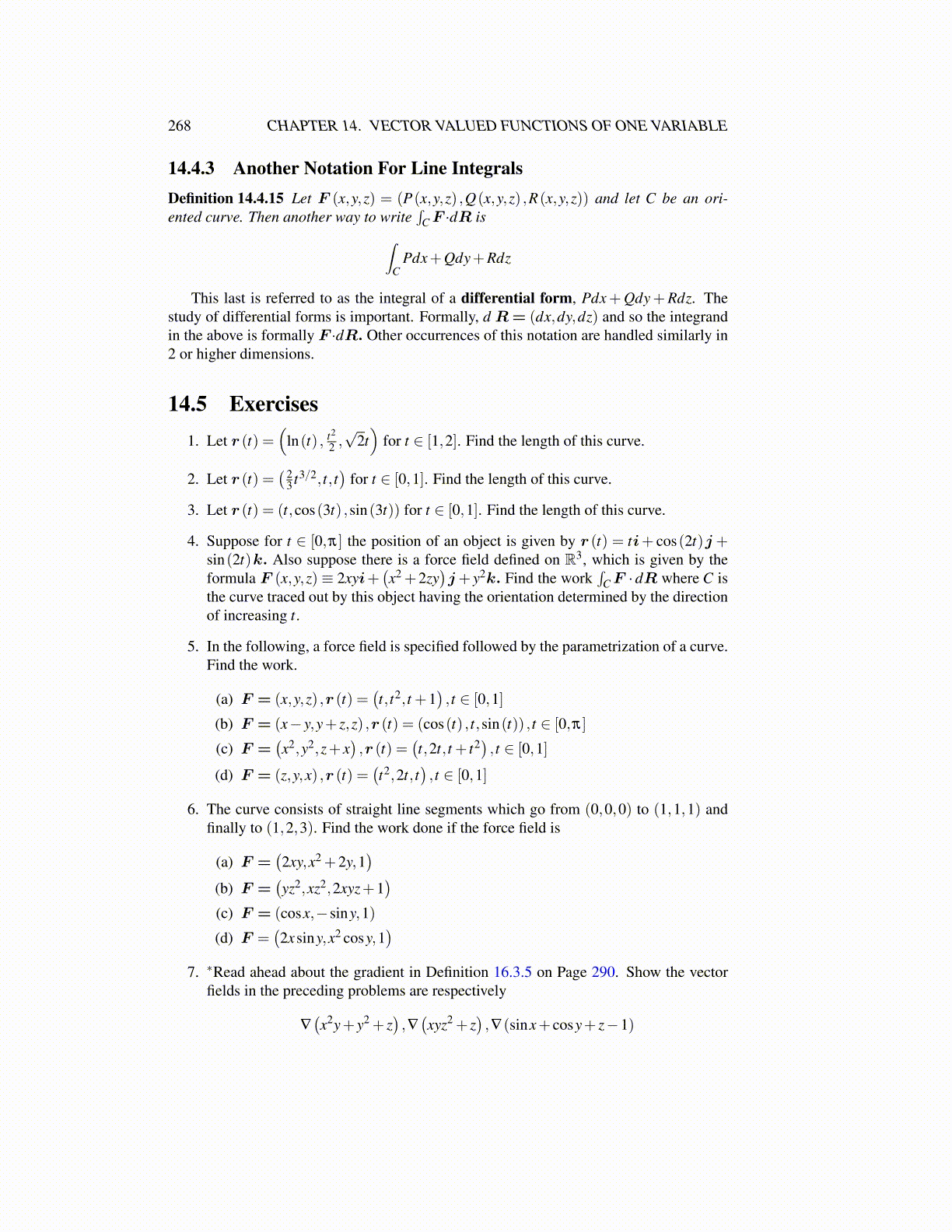
268 CHAPTER 14. VECTOR VALUED FUNCTIONS OF ONE VARIABLE
14.4.3 Another Notation For Line IntegralsDefinition 14.4.15 Let F (x,y,z) = (P(x,y,z) ,Q(x,y,z) ,R(x,y,z)) and let C be an ori-ented curve. Then another way to write
∫C F ·dR is∫
CPdx+Qdy+Rdz
This last is referred to as the integral of a differential form, Pdx+Qdy+Rdz. Thestudy of differential forms is important. Formally, d R= (dx,dy,dz) and so the integrandin the above is formally F ·dR. Other occurrences of this notation are handled similarly in2 or higher dimensions.
14.5 Exercises1. Let r (t) =
(ln(t) , t2
2 ,√
2t)
for t ∈ [1,2]. Find the length of this curve.
2. Let r (t) =( 2
3 t3/2, t, t)
for t ∈ [0,1]. Find the length of this curve.
3. Let r (t) = (t,cos(3t) ,sin(3t)) for t ∈ [0,1]. Find the length of this curve.
4. Suppose for t ∈ [0,π] the position of an object is given by r (t) = ti+ cos(2t)j+sin(2t)k. Also suppose there is a force field defined on R3, which is given by theformula F (x,y,z)≡ 2xyi+
(x2 +2zy
)j+ y2k. Find the work
∫C F ·dR where C is
the curve traced out by this object having the orientation determined by the directionof increasing t.
5. In the following, a force field is specified followed by the parametrization of a curve.Find the work.
(a) F = (x,y,z) ,r (t) =(t, t2, t +1
), t ∈ [0,1]
(b) F = (x− y,y+ z,z) ,r (t) = (cos(t) , t,sin(t)) , t ∈ [0,π]
(c) F =(x2,y2,z+ x
),r (t) =
(t,2t, t + t2
), t ∈ [0,1]
(d) F = (z,y,x) ,r (t) =(t2,2t, t
), t ∈ [0,1]
6. The curve consists of straight line segments which go from (0,0,0) to (1,1,1) andfinally to (1,2,3). Find the work done if the force field is
(a) F =(2xy,x2 +2y,1
)(b) F =
(yz2,xz2,2xyz+1
)(c) F = (cosx,−siny,1)
(d) F =(2xsiny,x2 cosy,1
)7. ∗Read ahead about the gradient in Definition 16.3.5 on Page 290. Show the vector
fields in the preceding problems are respectively
∇(x2y+ y2 + z
),∇(xyz2 + z
),∇(sinx+ cosy+ z−1)